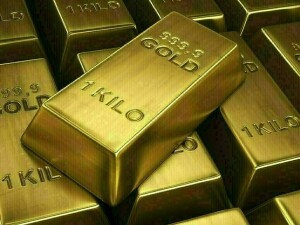With Islamabad finally reaching an agreement with the IMF, there were many brimming with hope Monday morning that the KSE-100 would reverse its recent bearish trend, even if as a matter of rebound. And that’s what exactly happened, albeit temporarily. The market jacked up more than 500 points in early trade but closed 816 points lower—a swing of 1327 points. The PSX is not a place for the weak-hearted these days!
Some people still believe that the market action yesterday was a knee-jerk reaction, and a relief rally will soon ensue, even if with limited upside to 38000 points. The argument: there is hardly anything new in the IMF’s press release, and pretty soon reason should prevail with long term investors thronging to capture those attractive values of 6.x price-to-earnings, and 5.x dividend yields. Then again, not necessarily so.
The market was previously expecting a IMF-dictated rate hike of 100 basis points. In late January 2019, BR Research interviewed Dr. Amjad Waheed, the boss of NBP Fund Management, who said, “The market has already priced in the likely interest rate hike of one percent.” Just yesterday, Alfalah CLSA Securities also wrote that they “maintain” their view, in which they “see the discount rate to peak at 12.5 percent” (currently at 11.25).

Today there is an increasing number of people expecting a rate hike of 200 basis points, whereas some fear even 300 bps. Yet those expectations and fears of a 200-300 bps hike are not new. They were born before this weekend, which is why Monday’s slide is a mystery. The slide below 35000 points should have happened much earlier when the market was making attempts in vain to cross 40-K.
Second, the jury is still out on the exchange rate. It has become a story of unto your fears, your economic maths, and your scoops, and unto mine. Consensus over PKR is elusive. Except for the fact that the PKR will weaken, no one is able to pin their bets to a particular number. This too offers enough reasons for uncertainty, over and above the fiscal worries that will also impair growth outlook which in turn will lead to a revision of earnings outlook post-budget FY20.
This brings us to the cheap valuations and buy long on dips thesis. The only type of investor really walking that talk is the foreign investor. Fifty-four million dollars isn’t a lot (see table) but surely, they are the ones betting the most on that mantra called ‘buy-on-dips and going-long’. And then there are the banks to an extent, because of the type of investments they hold.
Sell-side players (brokers) aren’t too aggressive, even though they are the ones selling that mantra every day. Individuals aren’t buying that mantra, and surely not the insurance sector that is selling even in some of the most-touted plays in banking and oil and gas that have a combined weight of 50 percent plus at KSE-100. Equity mutual funds? Well, they are a victim of plain redemption and/or migration to fixed income; hence they are the top sellers.
The question is who is going to buy. Brokers aren’t walking the talk. Mutual funds haven’t got what Wall Street boys call ‘dry powder’. Dr. Amjad told BR Research yesterday that equity funds are generally invested more than 90 percent in the equities; some of his own funds are invested 92-94 percent.
Insurance players are clearly sitting on the fence, so are local individuals—partly because fixed income offers better returns and partly because of the set of uncertainties that still lie unresolved and will likely remain unresolved till details of the IMF agreement are out in the open, and the budget FY20 is out. But what about the foreigners, one may ask? Think again.
Can foreigners really justify going long in a market as uncertain as Pakistan’s at the moment? Do the risks justify the returns? Channel checks with those who were on road shows of late suggest that foreign players are not very aggressive on Pakistan at the moment despite their belief that Pakistan’s valuations are currently attractive.
It would not be surprising if the market bounced back from its current levels on technical grounds and found grazing grounds between 35000-38000 points. But perhaps the proverbial blood in the market hasn’t dried up yet; not enough to bring back buyers (See Stocks: in hopes of quantum healing, May 4, 2019 & Pakistan equities: precariously cheap, April 30, 2019)
On January 21 this year, BR Research published a piece titled ‘Game of nerves: the plot thickens’. The IMF agreement has unfolded that plot further, and we can now see how the rest of the drama might pan out. But the final episode of Game of Nerves isn’t out. Perhaps it will look pretty and then again, perhaps it won’t.
























Comments
Comments are closed.